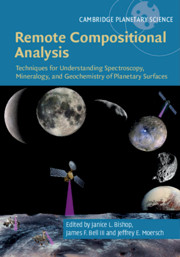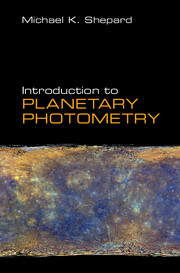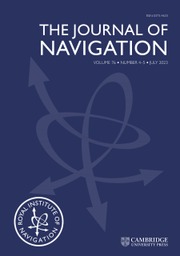Remote Compositional Analysis
How do planetary scientists analyze and interpret data from laboratory, telescopic, and spacecraft observations of planetary surfaces? What elements, minerals, and volatiles are found on the surfaces of our Solar System's planets, moons, asteroids, and comets? This comprehensive volume answers these topical questions by providing an overview of the theory and techniques of remote compositional analysis of planetary surfaces. Bringing together eminent researchers in Solar System exploration, it describes state-of-the-art results from spectroscopic, mineralogical, and geochemical techniques used to analyze the surfaces of planets, moons, and small bodies. The book introduces the methodology and theoretical background of each technique, and presents the latest advances in space exploration, telescopic and laboratory instrumentation, and major new work in theoretical studies. This engaging volume provides a comprehensive reference on planetary surface composition and mineralogy for advanced students, researchers, and professional scientists.
- Provides comprehensive insight into surface composition of bodies in our Solar System, including the latest results from recent and current planetary missions
- Presents laboratory measurement techniques and spectra for numerous rocks and minerals (including ices and organics), providing a useful source of spectral properties and lab data for those analyzing data from current and upcoming missions
- Includes detailed discussions of field applications and analysis methods, benefitting readers applying spectroscopic and geochemical methods to complex systems
- Covers theoretical background information for several types of spectroscopy and other remote sensing techniques, as well as data analysis procedures for new instruments, allowing a fundamental understanding of a wide variety of methods
Reviews & endorsements
'… provides a thoroughly updated entry point to the field, covering the techniques used on missions from Mercury to Pluto and almost everywhere in between … Researchers will appreciate the copious end-of-chapter references (chapter 3 alone provides 132 citations). Though the density of information may be intimidating to novices, libraries supporting graduate astronomy programs should certainly acquire this book.' S. G. Decker, Choice
Product details
November 2019Adobe eBook Reader
9781316953037
0 pages
0kg
32 b/w illus. 147 colour illus.
This ISBN is for an eBook version which is distributed on our behalf by a third party.
Table of Contents
- Part I. Theory of Remote Compositional Analysis Techniques and Laboratory Measurements:
- 1. Electronic spectra of minerals in the visible and near-infrared regions
- 2. Theory of reflectance and emittance spectroscopy of geologic materials in the visible and infrared regions
- 3. Mid-IR (thermal) emission and reflectance spectroscopy: laboratory spectra of geologic materials
- 4. Visible and near-infrared reflectance spectroscopy: laboratory spectra of geologic materials
- 5. Visible and infrared spectroscopy of ices, volatiles and organics
- 6. Raman spectroscopy: theory and laboratory spectra of geologic materials
- 7. Mössbauer spectroscopy: theory and laboratory spectra of geologic materials
- 8. Laser-induced breakdown spectroscopy: theory and laboratory spectra of geologic materials
- 9. Fundamentals of neutron, X-ray and gamma ray spectroscopy
- 10. Radar remote sensing: theory and applications
- Part II. Terrestrial Field and Airborne Applications:
- 11. Visible and near-infrared reflectance spectroscopy: field and airborne measurements
- 12. Raman spectroscopy: field measurements
- Part III. Analysis Methods:
- 13. Effects of environmental conditions on spectral measurements
- 14. Hyper- and multispectral VNIR imaging analysis
- 15. Thermal infrared spectral modeling
- 16. Geochemical interpretations using multiple remote datasets
- Part IV. Applications to Planetary Surfaces:
- 17. Spectral analyses of Mercury
- 18. Compositional analysis of the Moon from the visible and near-infrared
- 19. Spectral analyses of asteroids
- 20. VIS-NIR spectral analyses of asteroids and comets from Dawn and Rosetta
- 21. Spectral analyses of Saturn's moons using Cassini-VIMS
- 22. Spectroscopy of Pluto and its satellites
- 23. VSWIR spectral analyses of Mars from orbit using CRISM and OMEGA
- 24. Thermal infrared spectral analyses of Mars from orbit using TES and THEMIS
- 25. Rover-based thermal infrared remote sensing of Mars using the mini-TES instrument
- 26. Compositional and mineralogic analyses of Mars using multispectral imaging on the Mars Exploration Rover, Phoenix, and Mars Science Laboratory Missions
- 27. Iron mineralogy, oxidation state, and alteration on Mars from Mössbauer spectroscopy at Gusev Crater and Meridiani Planum
- 28. Elemental analyses of Mars using APXS
- 29. Elemental analyses of Mars with LIBS by ChemCam and SuperCam
- 30. X-ray, gamma-ray, and neutron spectroscopy: planetary missions
- 31. Radar remote sensing of planetary bodies.






